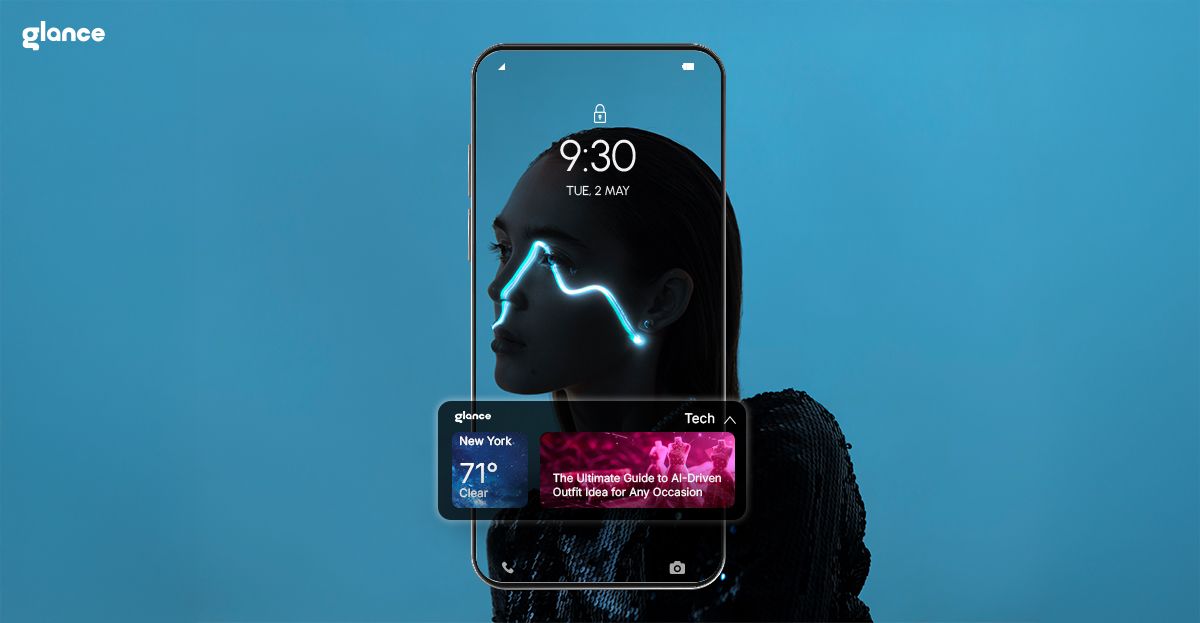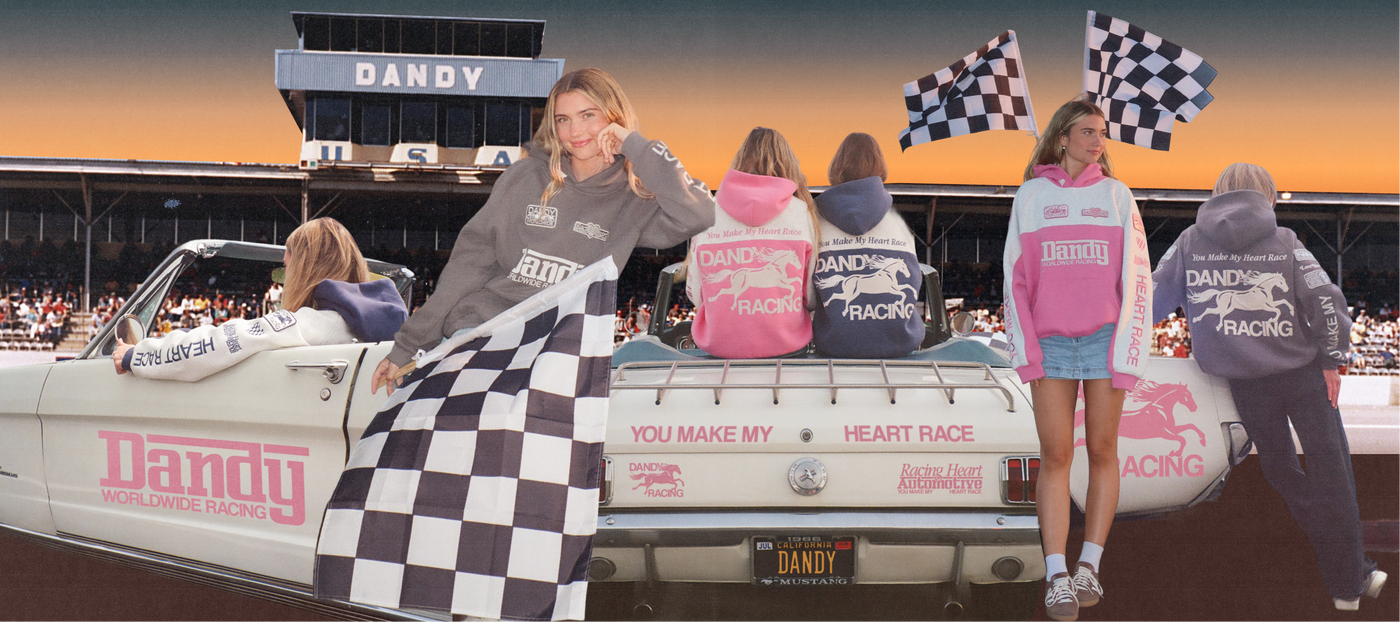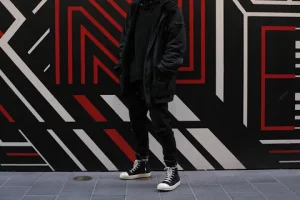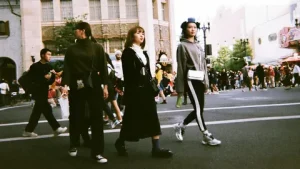Fashion
Demand Sensing vs Forecasting: AI’s New Frontier in Retail

Introduction
In retail, staying one step ahead of customer demand is everything. For decades, businesses have relied on demand forecasting to predict what products to stock, when to restock them, and how to plan promotions. But in today’s fast-paced, data-heavy marketplace, forecasting isn’t always enough. Enter AI-powered demand sensing—a smarter, real-time approach that’s reshaping how retailers anticipate and respond to consumer needs.
With tools like retail sensing AI becoming mainstream, businesses are finding ways to react to customer signals almost instantly, improving efficiency, reducing waste, and boosting profitability. Platforms like Glance AI, while focused on AI shopping solutions, show just how AI is transforming consumer experiences—and similar technology is revolutionizing supply chain and inventory systems, too.
In this blog, we’ll break down the difference between traditional forecasting and AI demand sensing, why the latter is considered the future of retail, and how businesses can harness this technology to stay competitive.
What is Demand Forecasting?
Demand forecasting is the traditional practice of predicting customer demand based on historical data. Retailers often rely on past sales patterns, seasonal trends, and promotional calendars to estimate what consumers will purchase in the future.
For example, a clothing retailer might look at last year’s holiday sales numbers to determine how many coats to stock this year. While useful, this approach has clear limitations—it assumes the future will mirror the past, and in today’s market, that’s not always true.
Limitations of Forecasting:
- Fails to adapt quickly to unexpected events (e.g., sudden weather changes, global supply chain disruptions).
- Often misses short-term demand shifts influenced by social media trends.
- Heavily reliant on static datasets that quickly become outdated.
What is AI-Powered Demand Sensing?
Unlike forecasting, AI-powered demand sensing focuses on real-time insights. Instead of just analyzing historical sales data, it integrates multiple live data streams, such as:
- Point-of-sale (POS) transactions
- Social media trends
- Local events and holidays
- Supply chain fluctuations
- Economic indicators
By leveraging retail sensing AI, businesses can detect micro-trends—small but impactful shifts in consumer demand—that forecasting might overlook.
For instance, if a celebrity suddenly wears a particular sneaker, AI demand sensing can identify the spike in online chatter and immediately suggest adjustments in stock allocation.
Demand Sensing vs Forecasting: The Core Differences
Let’s break down the key differences between forecasting and demand sensing:
| Feature | Demand Forecasting | AI-Powered Demand Sensing |
| Data Type | Historical | Real-time + historical |
| Accuracy | Long-term predictions, less precise in short-term | Short-term, highly accurate |
| Flexibility | Limited | Adaptive to sudden changes |
| Decision Speed | Slow | Rapid, automated responses |
While forecasting is about the “big picture” over months or years, AI demand sensing is about agility—helping businesses respond to what’s happening right now.
Why Retailers Need AI Demand Sensing Today
In a retail world dominated by fast-changing trends, consumers don’t wait. Brands that can adapt quickly win, while those that can’t risk losing sales or overstocking products.
Here’s why AI-powered demand sensing is becoming essential:
- Faster Response Times: Retailers can quickly adjust production and distribution.
- Reduced Waste: Prevents overstocking or understocking.
- Customer Satisfaction: Products are available when customers want them.
- Cost Efficiency: Smarter inventory management lowers operational costs.
Consider how Glance AI helps shoppers discover products instantly based on preferences. Similarly, retail sensing AI helps businesses ensure those products are actually available at the right time.
How AI Demand Sensing Works
At its core, AI-powered demand sensing relies on three pillars:
1. Data Integration
AI gathers data from diverse sources—POS systems, supply chains, weather forecasts, and even social media.
2. Machine Learning Models
Algorithms identify patterns and correlations in real time.
3. Automated Recommendations
AI generates actionable insights: how much stock to order, where to allocate it, and when to run promotions.
This makes AI demand sensing less about guesswork and more about precision-driven decisions.
Use Cases of Retail Sensing AI
Let’s look at how retail sensing AI is transforming industries:
- Fashion Retail: Predicting sudden surges in demand when a new style goes viral.
- Grocery Chains: Adjusting stock for unexpected weather changes (e.g., heatwaves driving ice cream sales).
- Electronics: Responding to new product launches or sudden tech trends.
- Pharmaceuticals: Anticipating seasonal demand for medicines.
These examples highlight why demand sensing is increasingly seen as the new standard for retail efficiency.
AI and the Consumer Experience
While AI focuses on AI-driven shopping experiences for consumers, its existence reflects a broader movement—AI’s role in bridging consumer behavior and business decision-making.
AI empowers shoppers to make faster, smarter purchasing decisions. On the other side of the spectrum, AI demand sensing empowers retailers to ensure those choices are met with availability and convenience.
Together, these AI-driven approaches create a frictionless shopping ecosystem.
Challenges in Implementing AI Demand Sensing
Despite its advantages, adopting AI-powered demand sensing isn’t without hurdles:
- High Initial Investment: Setting up systems and integrating AI tools.
- Data Quality Issues: Inaccurate or incomplete data can skew results.
- Change Management: Employees may resist new tech-driven processes.
Yet, as more businesses witness its benefits, adoption rates are accelerating—making it a competitive necessity.
The Future of AI Demand Sensing
The next phase of retail sensing AI is about autonomous decision-making. Instead of just suggesting actions, AI will increasingly execute changes automatically—from stock reallocation to dynamic pricing.
This aligns with the broader trend of predictive commerce, where shopping platforms like Glance AI help consumers make seamless purchase decisions while retailers simultaneously optimize supply chains.
Final Thoughts
The retail industry is evolving rapidly, and businesses that cling to outdated methods risk falling behind. Demand forecasting still has its place for long-term strategy, but the future is undeniably with AI-powered demand sensing.
By harnessing retail sensing AI, companies gain the agility to respond to ever-changing consumer behavior. Combined with platforms like Glance AI—which redefine how shoppers browse and buy—the result is a retail landscape that’s faster, smarter, and more aligned with real-time needs.
In the debate of demand sensing vs forecasting, the winner is clear: AI-driven sensing represents the next frontier of retail success.
Fashion
Artful Streetwear: Dandy Worldwide and the Dandy Hoodie

Rise of Avant-garde Artful Streetwear:
In today’s appearance landscape where self-expression has become aloof as important as craftsmanship few arising labels accept carved out a amplitude as audible and culturally beating as Dandy Worldwide.
Known for its admixture of artful influence, streetwear sensibility, and animated minimalism, the cast has bound become a admired amid style-driven youth, agenda creators, and those who access against individuality rather than redundancy. At the centermost of its acceptance lies the Dandy Hoodie, a apparel that encapsulates aggregate the cast stands for: creativity, comfort, and a assured access to artful identity.

The Rise of Dandy Worldwide:
Dandy Worldwide is added than aloof a accouterment brand it’s a avant-garde artful movement that merges abreast ability with wearable expression. Founded on the abstraction that appearance should be bold, personal, and narrative-driven, the cast approaches streetwear not alone as accustomed accouterment but as a canvas for storytelling.
While abounding labels attack to ride the after-effects of amusing media micro-trends, Dandy Worldwide stands out for its advised consistency. The cast cultivates an atmosphere of authenticity, cartoon afflatus from adolescence culture, agenda art, indie music aesthetics, and the raw artful activity of the all-around streetwear scene.
Every bead feels curated, cohesive, and accumbent with a bigger vision: to animate bodies to embrace their quirks, highlight their personalities, and abrasion aplomb as angrily as they abrasion the clothes.
In a apple saturated with fast appearance and disposable statements, Dandy Worldwide offers a auspicious counter-narrative one that prioritizes anxious design, a audible identity, and abiding cultural impact.
A Audible Architecture Language:
At its core, Dandy Worldwide’s architecture aesthetics is abiding in a alloy of artlessness and eccentricity. The visuals are generally apple-pie but alloyed with abrupt twists graphic motifs, bendable gradients, adulterated typography, or surrealist adumbration that curtains into the artful ancillary of streetwear. This antithesis allows the apparel to abide wearable while still continuing out.
The brand’s collections generally analyze capacity like agenda identity, adolescence rebellion, artful freedom, and affecting expression. This abreast access elevates the accouterment into a affectionate of beheld diary, area anniversary allotment feels like a statement, a mood, or a folio from a beyond story.
The Dandy Hoodie:
Among all the brand’s offerings, the Dandy Hoodie has become its signature piece. Loved for its comfort, clear punch, and avant-garde silhouette, it represents the actual aspect of Dandy Worldwide’s architecture language. What makes the Dandy Hoodie so arresting isn’t aloof the beheld appeal it’s the alloy of affection and abstraction abaft it.
Animated Comfort:
The Dandy Hoodie is advised with a exceptional alloy of ample affection and brushed fleece, giving it a bendable yet abiding feel. The bolt retains amore after activity bulky, authoritative it acceptable for every season layer it in winter or abrasion it abandoned on acknowledgment summer nights. The airy fit strikes a absolute balance: ample abundant to bear streetwear-appropriate silhouette, yet structured abundant to advance shape.
Signature Cartoon and Identity:
One of the defining elements of the Dandy Hoodie is its clear design. Whether it appearance the brand’s signature “Dandy Worldwide” logo, conceptual artwork, or minimalist band drawings, every clear has intention. The prints are crisp, long-lasting, and positioned to actualize beheld balance. Some hoodies absorb cogitating elements or multi-layered designs, axis the allotment into added than aloof apparel it becomes wearable art.
Versatility That Enhances Accustomed Styling:
A acceptable hoodie should alloy with wardrobes effortlessly, and the Dandy Hoodie does absolutely that. It pairs flawlessly with wide-leg trousers, carpenter pants, cargos, denim, or alike shorts. Because of its apple-pie yet alive personality, it adapts calmly to assorted settings school fits, accidental hangouts, artful workspaces, and alike travel.
For those who acknowledge streetwear layering, the hoodie works beautifully beneath adviser jackets, varsity jackets, colossal denim, or puffer vests. Its administration adaptability is one of the affidavit it appeals to such a advanced demographic.
The Appeal to Adolescence and Creatives:
Gen Z and artful communities accept abnormally affiliated with Dandy Worldwide. The cast resonates with bodies who adopt allusive aesthetics, adore beginning silhouettes, and adulation pieces that adjust with their identity. The Dandy Hoodie, with its adventurous personality and active spirit, has become a apparel basic for agenda artists, videographers, musicians, photographers, and agreeable creators.
Why Dandy Worldwide Stands Out in the Streetwear Market:
The streetwear apple is crowded filled with brands aggressive for attention. Yet Dandy Worldwide distinguishes itself through three defining factors:
Authentic Identity:
Dandy Worldwide stays accurate to its artful foundation. It doesn’t hunt viral trends or actor the silhouettes of bequest streetwear labels. Instead, the cast nurtures a altered character with constant artful direction. This actuality builds trust a affection that consumers amount acutely in the age of hyper-commercialized fashion.
Focused Craftsmanship:
While some brands focus alone on hype, Dandy Worldwide emphasizes affection and detail. Every hoodie, tee, and accent undergoes accurate production. The materials, stitching, and press are all carefully executed, acceptance the items to authority up over time. Customers admit this reliability, reinforcing adherence to the brand.
Strong Cultural Connection:
Dandy Worldwide speaks the accent of avant-garde creativity. Its visuals adjust with agenda art aesthetics, bedroom-studio culture, lo-fi influences, and the abrasive agreeableness of abreast youth. This affiliation makes the cast feel relevant not as a addict of culture, but as a actor in abstraction it.
The Approaching of Dandy Worldwide:
As Dandy Worldwide continues to aggrandize its offerings, its access shows no signs of slowing. With every new collection, the cast added defines its artful cast and strengthens its attendance in the all-around streetwear community. Expect to see new silhouettes, richer graphics, broadcast blush palettes, and added beginning designs in approaching releases.
But one affair is certain the Dandy Hoodie will abide a cornerstone of the brand. It symbolizes aggregate Dandy Worldwide represents: creativity, comfort, artful direction, and the adventuresomeness to be different.For more visit.
Business
GV Gallery Clothing: Modern Streetwear with Comfort and Style

GV Gallery Clothing Overview
The appeal of GV Gallery Clothing lies in its balance. The pieces are expressive without being overwhelming, making them easy to style in daily life. From relaxed fits to structured outerwear, the brand offers a complete lineup that supports individuality while maintaining comfort and durability.

GV Gallery Hoodie Style and Comfort
The GV Gallery Hoodie is one of the most recognizable pieces in the brand’s lineup. Designed with a focus on comfort and aesthetic appeal, it delivers a relaxed fit that works well for casual wear and layered outfits. The fabric feels soft against the skin while maintaining enough structure to hold its shape throughout the day.
What makes the GV Gallery Hoodie stand out is its thoughtful design. The hood is well-shaped, the stitching is clean, and the graphics or minimal branding add personality without overpowering the garment. It is a hoodie that transitions easily from lounging at home to stepping out for social settings, making it a versatile choice for different lifestyles.
GV Gallery Sweatpants Everyday Wear
GV Gallery Sweatpants redefine casual comfort by combining relaxed silhouettes with elevated design elements. They are crafted to offer freedom of movement while still maintaining a refined streetwear look. The fabric is breathable yet substantial, ensuring comfort during extended wear without losing its shape.
These sweatpants work well as a complete set with hoodies or as standalone pieces paired with shirts and jackets. Their clean construction allows them to be worn beyond indoor settings, making them suitable for casual outings, travel, and creative environments. GV Gallery Sweatpants reflect the brand’s commitment to comfort without compromising style.
Gallery Shirt Design Identity
GV Gallery Shirts showcase the artistic side of the brand through thoughtful graphics, typography, and color palettes. Each shirt is designed to feel expressive while remaining wearable. The fits are generally relaxed, allowing for airflow and comfort while maintaining a flattering silhouette.
The quality of fabric plays a major role in the appeal of GV Gallery Shirts. Soft textures, durable stitching, and attention to detail ensure longevity. These shirts serve as statement pieces or layering essentials, making them adaptable to various outfits and seasons. They embody the creative spirit that defines GV Gallery Clothing as a whole.
GV Gallery Shorts Seasonal Versatility
GV Gallery Shorts are designed with warm weather and active lifestyles in mind. They provide comfort and flexibility while maintaining a streetwear-focused appearance. The length and fit are balanced, offering ease of movement without looking oversized or restrictive.
These shorts are ideal for casual days, creative workspaces, or relaxed social settings. Their minimal design approach allows them to pair effortlessly with shirts, hoodies, or lightweight jackets. Gallery Shorts demonstrate how simplicity and functionality can coexist within modern fashion.
GV Pants Modern Streetwear
GV Gallery Pants offer a refined alternative to traditional casual bottoms. They feature structured fits that still allow for comfort, making them suitable for both relaxed and slightly elevated looks. The brand emphasizes clean lines, subtle detailing, and durable materials in their pant designs.
These pants are versatile enough to be worn across different seasons. They work well with hoodies for a casual streetwear look or with jackets for a more put-together outfit. GV Gallery Pants reflect the brand’s philosophy of blending practicality with artistic expression.
Jackets Statement Outerwear
GV Gallery Jackets are crafted to make an impact while serving a functional purpose. They provide warmth and protection while maintaining a strong visual identity. The designs often feature unique cuts, textures, or graphics that elevate the overall look of an outfit.
Comfort and durability remain central to the construction of GV Gallery Jackets. The materials are selected to withstand regular wear, making them reliable outerwear options. These jackets are ideal for layering and serve as statement pieces that complete the GV Gallery aesthetic.
Quality and Craftsmanship Focus
Across all categories, GV Gallery Clothing emphasizes quality craftsmanship. The brand prioritizes fabric selection, stitching precision, and fit consistency. This attention to detail ensures that each piece feels premium and lasts beyond a single season.
The commitment to quality allows GV Gallery Clothing to maintain its identity while evolving creatively. Customers can trust that each item is designed with both style and longevity in mind, reinforcing the brand’s credibility within streetwear culture.
Styling GV Gallery Clothing
Styling GV Gallery Clothing is effortless due to its cohesive design language. The pieces are made to work together, allowing individuals to mix and match items without clashing aesthetics. Neutral tones combined with artistic graphics make the clothing adaptable to different personal styles.
Whether worn as complete sets or individual pieces, GV Gallery Clothing supports self-expression. It encourages wearers to create outfits that reflect their mood, creativity, and lifestyle without sacrificing comfort.
The GV Gallery Fashion Vision
GB Gallery represents more than just apparel; it represents a mindset rooted in creativity and individuality. The brand continues to grow by staying true to its artistic foundation while responding to the needs of modern streetwear enthusiasts. Each hoodie, shirt, pant, and jacket contributes to a broader vision of wearable art.
By focusing on comfort, quality, and expressive design, GB Gallery Clothing maintains a strong presence in contemporary fashion. It offers a wardrobe that feels authentic, versatile, and meaningful for those who value originality in what they wear.
Fashion
Satoshi Nakamoto: Merging Crypto Culture with Urban Fashion

Satoshi Nakamoto Clothing – Where Crypto Culture Meets Fashion
Satoshi Nakamoto Clothing Fashion has always been a reflection of society. From the catwalks of Paris to the streets of Tokyo, each garment carries a message, an identity, or even a form of silent rebellion.
recent years, with the rise of cryptocurrencies and blockchain technology, a new type of inspiration has begun to gain traction: crypto culture. And it is precisely in this space that the , A brand that combines urban style with the revolutionary mindset of the digital currency world.

The Origin of Inspiration: Satoshi Nakamoto
For those familiar with the world of cryptocurrencies, the name Satoshi Nakamoto needs no introduction. The mysterious creator of Bitcoin not only launched the first decentralized digital currency but also represented a philosophy of financial independence and disruptive innovation.
A Satoshi Nakamoto Clothing. You don’t just put a famous name on a t-shirt. Each piece reflects that mindset of freedom, questioning the traditional system, and seeking autonomy — values that resonate deeply with crypto enthusiasts.
Why Crypto Fashion Is Growing
Streetwear has always had a strong connection with cultural movements: from hip-hop to urban art, from skate culture to sustainable fashion. Crypto culture, with its aura of innovation and intellectual rebellion, fits perfectly into this scenario.
Investors, programmers, and young technology professionals began seeking clothing that was not only stylish but also expressed their beliefs and interests—a Satoshi Nakamoto shirt. The hoodie makes it clear that the user is aligned with the blockchain mindset — a subtle detail understood by those who share this universe.
Furthermore, the minimalist aesthetic of many of the pieces Satoshi Nakamoto clothing It’s not just about showing off, but about identity.
Urban Style with Meaning
The distinguishing feature of Satoshi Nakamoto Clothing lies in the balance between fashion and message. Um simples Satoshi Nakamoto. It may seem discreet at first glance, but every detail — from the fabric choice to the logo typography — is designed to convey authenticity and connection to crypto culture.
Unlike brands that follow fleeting trends, Satoshi Nakamoto Clothing focuses on timeless pieces.
A quality sweatshirt or a well-cut t-shirt lasts for years, remaining relevant for social gatherings, technology events, or blockchain meetups.
Quality that Speaks to the customer
Another essential characteristic is the best quality. Those who invest in urban fashion know that comfort is just as important as style.
They use premium fabrics, precise cuts, and reinforced seams, ensuring that each product is as reliable as the philosophy it represents.
Combination with Other Fashion Elements
One of the most interesting aspects of crypto fashion is its versatility. Satoshi Nakamoto Clothing pieces can be combined with a variety of styles, including jeans, minimalist sneakers, understated accessories, and even casual tailored pieces.
This flexibility makes clothing not just an aesthetic choice but an extension of the wearer’s personality. Furthermore, the brand frequently releases limited editions and exclusive collaborations, maintaining a high desirability factor and reinforcing the idea of exclusivity within urban and crypto culture.
Connecting with the Community
What sets Satoshi Nakamoto Clothing apart from other streetwear brands is its ability to connect fashion and community. Each piece serves as a symbol of belonging: by wearing a Satoshi Nakamoto shirt, you become part of a group that shares values of innovation, financial freedom, and questioning the status quo.
This connection is important because, at its core, fashion has always been about identity. In the digital age, especially in the world of cryptocurrencies, this sense of community becomes even more relevant.
Where to Buy
For those who wish to explore this unique fusion between fashion and crypto culture, all pieces are available on the official website: SatoshiNakamotoClothings.us. There, you’ll find everything from minimalist t-shirts to sweatshirts and accessories, all designed to reflect the philosophy and style of the crypto universe.
Conclusion
A Satoshi Nakamoto Clothing. It proves that fashion and technology can go hand in hand. Creating an authentic expression for those who value innovation, freedom, and style. Wearing a Satoshi Nakamoto shirt, it’s not just about appearance — it’s about subtly showing that you’re part of a cultural movement that is redefining the financial and technological world.
If you’re passionate about cryptocurrencies and streetwear, this is an opportunity to unite two worlds that, until recently, seemed distant. By choosing Satoshi Nakamoto Clothing, you’re not just buying clothes: you’re wearing a philosophy.
Investors, programmers, and young technology professionals began seeking clothing that was not only stylish but also expressed their beliefs and interests—a Satoshi Nakamoto shirt. The hoodie makes it clear that the user is aligned with the blockchain mindset — a subtle detail understood by those who share this universe.
Furthermore, the minimalist aesthetic of many of the pieces Satoshi Nakamoto clothing It’s not just about showing off, but about identity.
Satoshi Nakamoto shirt
Investors, programmers, and young technology professionals began seeking clothing that was not only stylish but also expressed their beliefs and interests—a Satoshi Nakamoto shirt. The hoodie makes it clear that the user is aligned with the blockchain mindset — a subtle detail understood by those who share this universe.
Furthermore, the minimalist aesthetic of many of the pieces Satoshi Nakamoto clothing It’s not just about showing off, but about identity.
Investors, programmers, and young technology professionals began seeking clothing that was not only stylish but also expressed their beliefs and interests—a Satoshi Nakamoto shirt. The hoodie makes it clear that the user is aligned with the blockchain mindset — a subtle detail understood by those who share this universe.
Furthermore, the minimalist aesthetic of many of the pieces Satoshi Nakamoto clothing It’s not just about showing off, but about identity.
Investors, programmers, and young technology professionals began seeking clothing that was not only stylish but also expressed their beliefs and interests—a Satoshi Nakamoto shirt. The hoodie makes it clear that the user is aligned with the blockchain mindset — a subtle detail understood by those who share this universe.
Furthermore, the minimalist aesthetic of many of the pieces Satoshi Nakamoto clothing It’s not just about showing off, but about identity.
Investors, programmers, and young technology professionals began seeking clothing that was not only stylish but also expressed their beliefs and interests—a Satoshi Nakamoto shirt. The hoodie makes it clear that the user is aligned with the blockchain mindset — a subtle detail understood by those who share this universe.
Furthermore, the minimalist aesthetic of many of the pieces Satoshi Nakamoto clothing It’s not just about showing off, but about identity.
-
Business2 years ago
Cybersecurity Consulting Company SequelNet Provides Critical IT Support Services to Medical Billing Firm, Medical Optimum
-
Business2 years ago
Team Communication Software Transforms Operations at Finance Innovate
-
Business3 years ago
Project Management Tool Transforms Long Island Business
-
Business2 years ago
How Alleviate Poverty Utilized IPPBX’s All-in-One Solution to Transform Lives in New York City
-
health3 years ago
Breast Cancer: The Imperative Role of Mammograms in Screening and Early Detection
-
Sports3 years ago
Unstoppable Collaboration: D.C.’s Citi Open and Silicon Valley Classic Unite to Propel Women’s Tennis to New Heights
-
Art /Entertainment3 years ago
Embracing Renewal: Sizdabedar Celebrations Unite Iranians in New York’s Eisenhower Park
-
Finance3 years ago
The Benefits of Starting a Side Hustle for Financial Freedom






























